If you're looking for one of the best bike pumps, you've come to the right place.
Over the years, the team at BikeRadar have put countless pumps to the test, from high-end track pumps and frame pumps to get-you-home mini pumps.
This list brings together some of the most reliable and durable pumps there are and has options to cater for every type of riding. So you'll be sure to find something to fit your needs, whether that's pumping your tyres up to 100psi quickly or getting your hands on a pump that will help you seat a tubeless tyre easily.
We've divided this list into the best track pumps and the best mini pumps.
Track pumps are ideal for home use because they will make light work of pumping up tyres. Mini pumps are suited to taking out on rides in case you have to fix a puncture, because they are lightweight and will fit in a pocket or frame bag.
You can skip to the track pump or mini pump sections by hitting one of the following links:
If you're not sure which pump is best for you, keep reading until the end for our bike pumps buyer's guide, where we take you through everything you need to know about this essential bike tool.
Editor's note: this list was updated on 20 January 2025 with our latest reviews and some information on how we test bike pumps.
Best track pumps of 2025
Lezyne Classic
Drive
SQUIRREL_TEXT_13179473
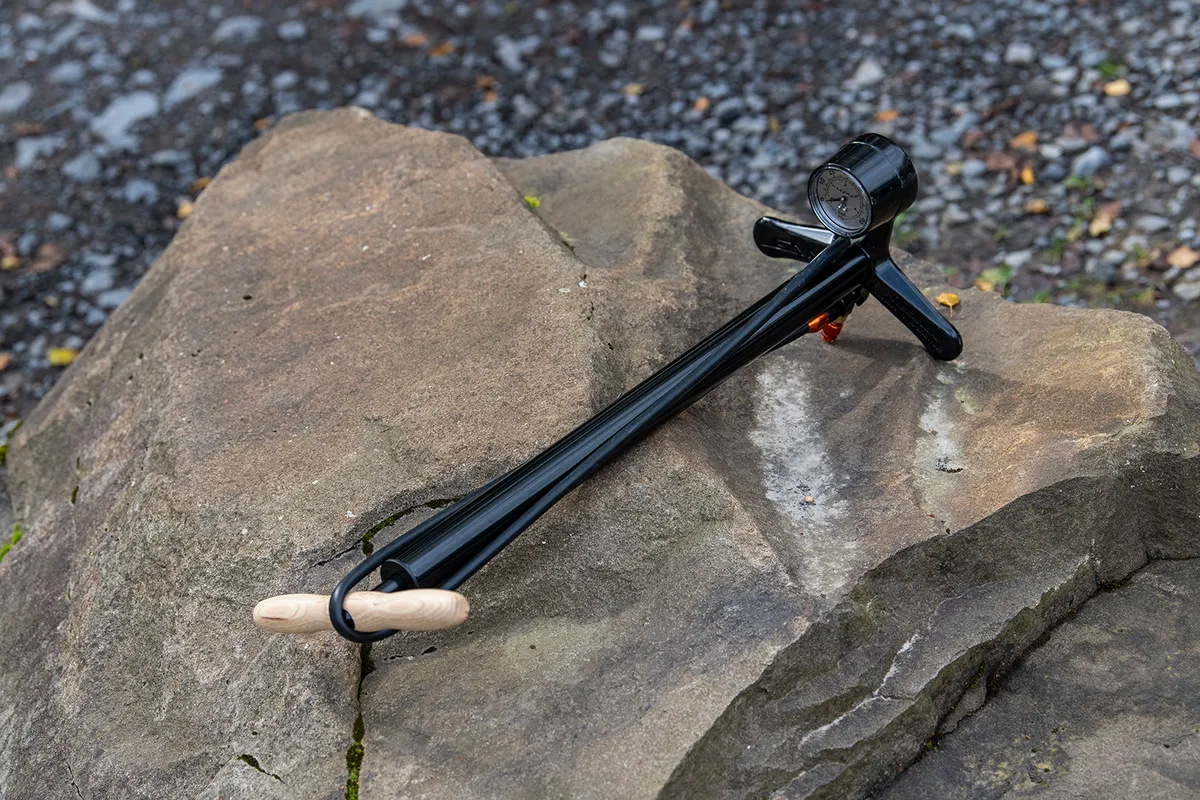
- £60 / $70 / AU$200 as tested
- Pros: Nice pump action; good efficiency; quality materials
- Cons: No effective bleed valve
The long, mid-volume barrel and quality metal construction help this Lezyne pump strike a great performance balance, with an easy action, smooth feel and low stroke counts. Although the gauge is at the base, it’s easy to read and accurate. The hose is long, and it’s easy to swap between valve types.
It's a shame that there’s no bleed valve for spot-on pressure adjustment and some won’t like the screw-on head, although we had no issues with the valve core working loose. Max pressure is only 60psi, which rules out use as a road pump.
SQUIRREL_13179473
Specialized AirTool Comp Floor Pump
SQUIRREL_TEXT_13179476
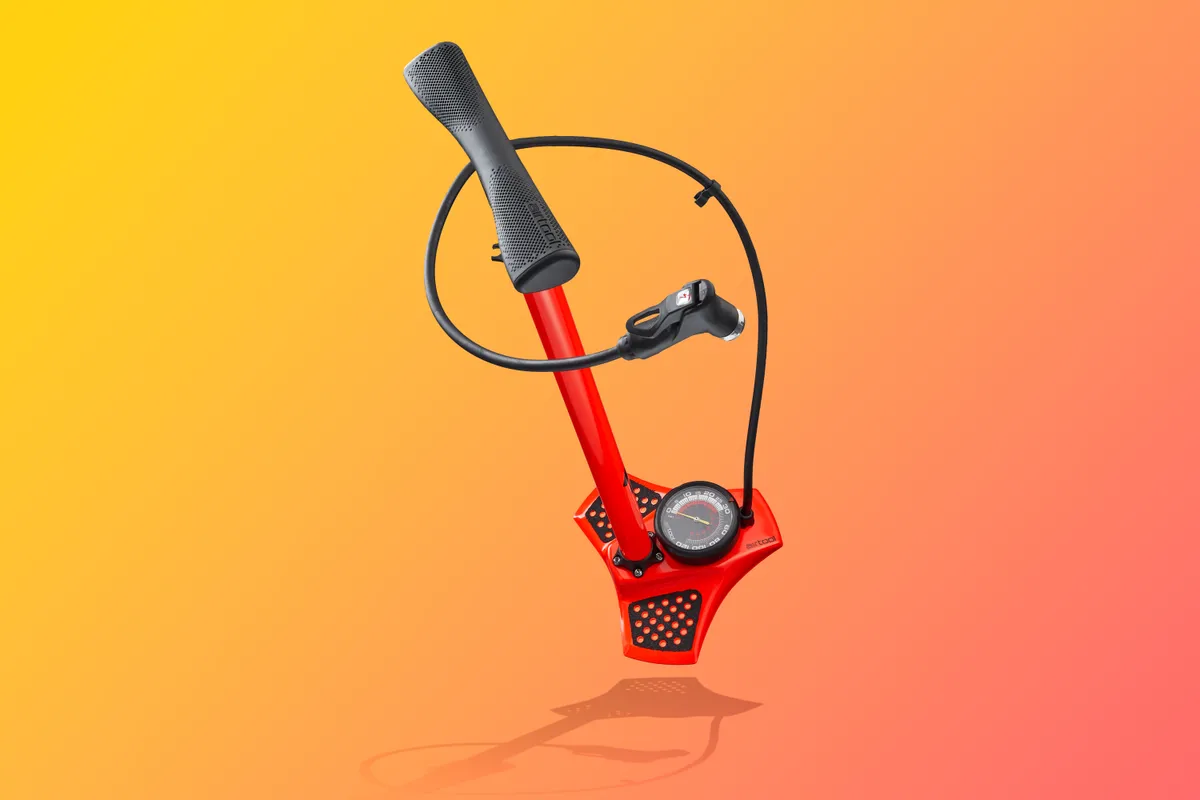
- £50 / $70 / €65 / AU$110
- Pros: Impressive ergonomics; easy-to-use head; large dial
- Cons: Those with small hands may find the handle on the small size
The AirTool Comp ticks all the boxes in terms of functionality, with a head that accepts all valve types and a large base featuring grip tape for use in unfavourable conditions.
A wide, 'aero'-shaped handle adds ergonomics that you didn't know were missing from a pump (although it is on the large side for those with smaller hands). The analogue dial features a two-stage face, allowing for greater accuracy up to 30psi for high-volume tyres.
SQUIRREL_13179476
Specialized AirTool MTB Floor Pump
SQUIRREL_TEXT_13179477
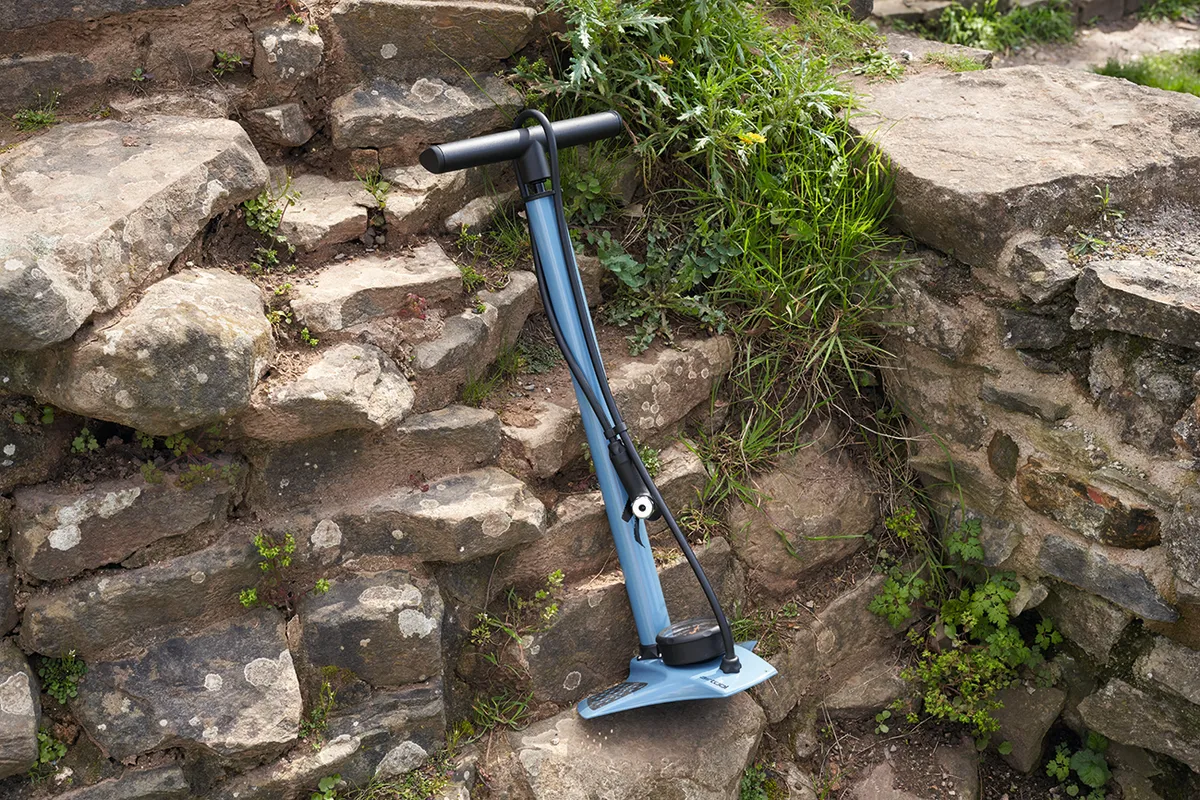
- £85 as tested
- Pros: Solid construction; comfortable handle; great action
- Cons: Cable retention feels flimsy
This MTB-specific track pump offers great efficiency, inflating a 29in tyre to 25psi in 23 strokes. The base is wide and features grip tape for added traction.
The AirTool MTB provides great ergonomics, with a forward pumping motion and a flat, wide plunger encouraging quick tyre inflation.
A release valve placed on the handle enables accurate pressure adjustment, with the small scale dial adding accuracy for high-volume tyres.
The SwitchHitter II head is one of the best, accepting both Presta and Schrader valve types without needing adjustment.
SQUIRREL_13179477
Topeak Tubi 2Stage
SQUIRREL_TEXT_13086311
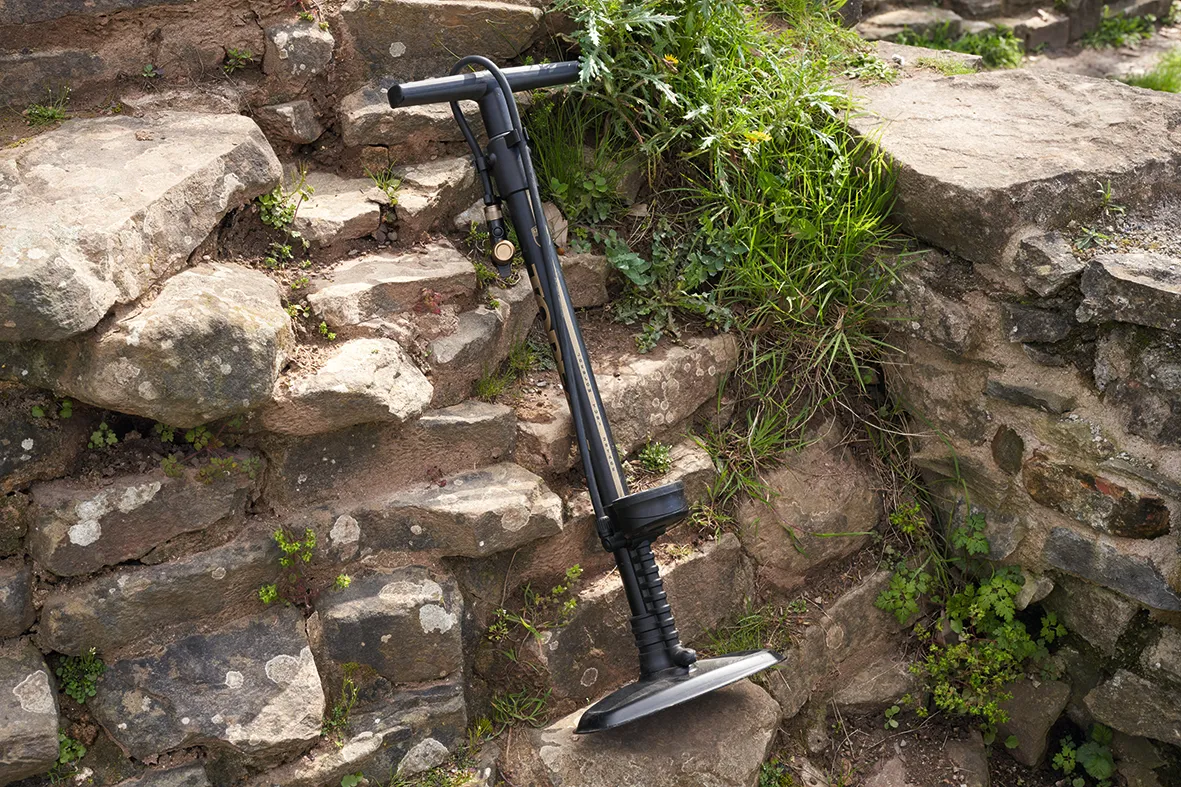
- £109.99 as tested
- Pros: Great high-volume efficiency; solid-feeling; practical dial
- Cons: Short hose; head poses some issues
One of a handful of pumps featuring a two-stage system, enabling you to choose a high-pressure or high-volume setting for larger tyres.
The Tubi 2Stage has great high-volume ability, inflating a 29in tyre to 25psi in only 13 strokes.
Tight tolerances and a sturdy base plate keep the pump feeling solid, allowing for some bizarre pumping techniques.
The valve core remover on the Tubi head takes a knack, and can sometimes make it difficult to reinsert the core.
SQUIRREL_13086311
Syncros Vernon 3.0TR
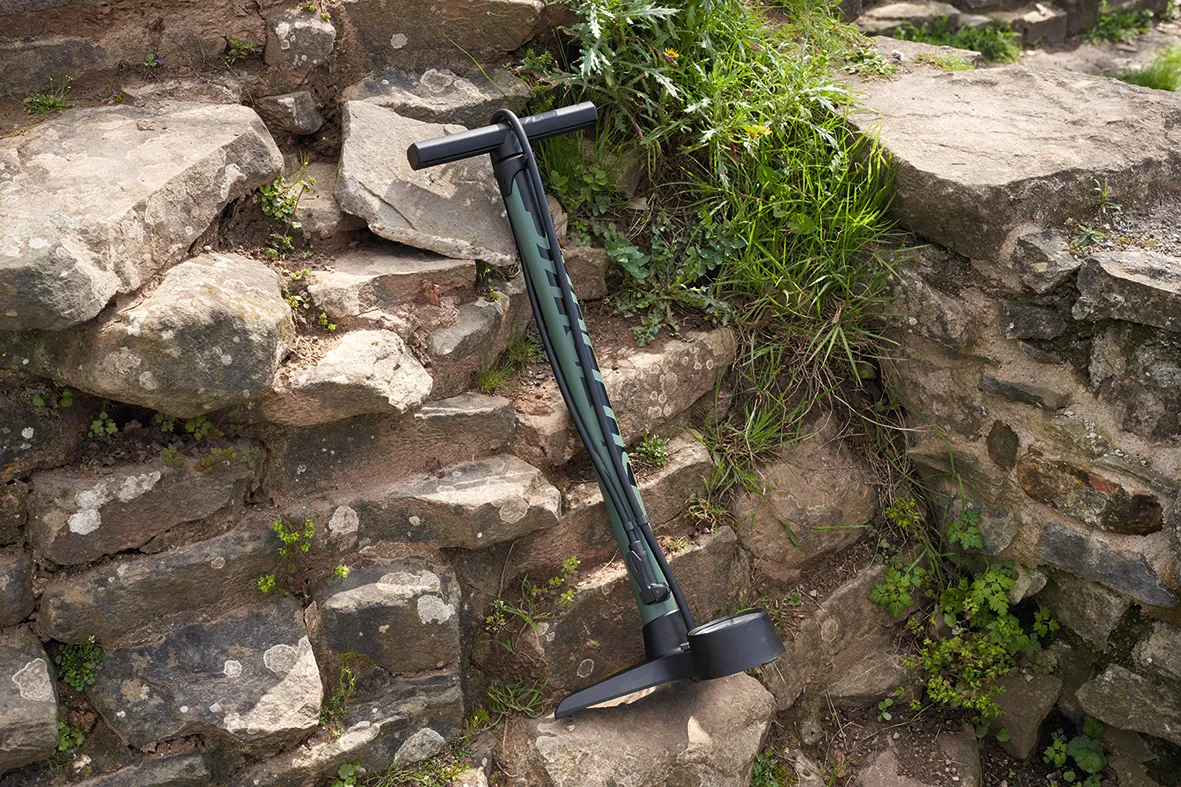
- £59.99 as tested
- Pros: Great high-volume performance; decent build quality; good-sized head
- Cons: Some flex in baseplate
The Syncros' 665cc volume proves extremely efficient at inflating high-volume tyres, requiring only 19 strokes to inflate a 29in tyre to 25psi.
A wide, flat handle makes for a comfortable interface, while the fine tolerance between the piston and cylinder allows for long strokes.
A downside to the pump's plastic construction is the base plate, which has some flex under heavy pumping.
The head is compatible with Presta valves and M6x0.8 stems for seating tubeless tyres. A Schrader adaptor is supplied, as well as a valve core remover.
SKS Air-X-Plorer Digi
SQUIRREL_TEXT_13118514
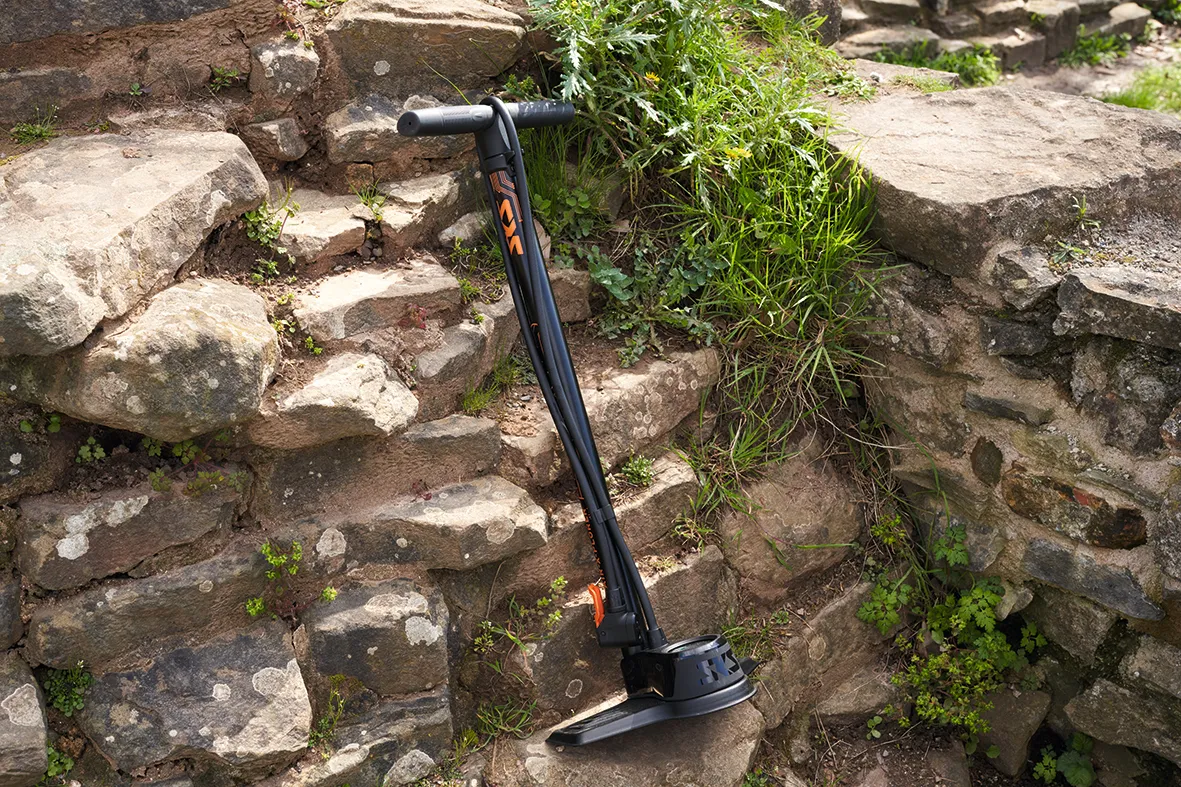
- £64.99 as tested
- Pros: Sturdy construction; impressive efficiency; fully serviceable
- Cons: Top-out spring feels unrefined
An encouraging pumping action and solid base make this pump less of a chore to use than other track pumps, allowing for a solid one-foot-off technique.
The MV-Easy head has two holes, allowing for both Schrader and Presta valve types, while the locking lever keeps a secure interface with all stems.
Compared to other digital displays, the SKS seems to over-read less when inflating your tyres.
A top-out spring at the top of the cylinder enables fast pumping, though on our test sample it made a disconcerting click.
SQUIRREL_13118514
Topeak Joeblow Mountain X
SQUIRREL_TEXT_13086310
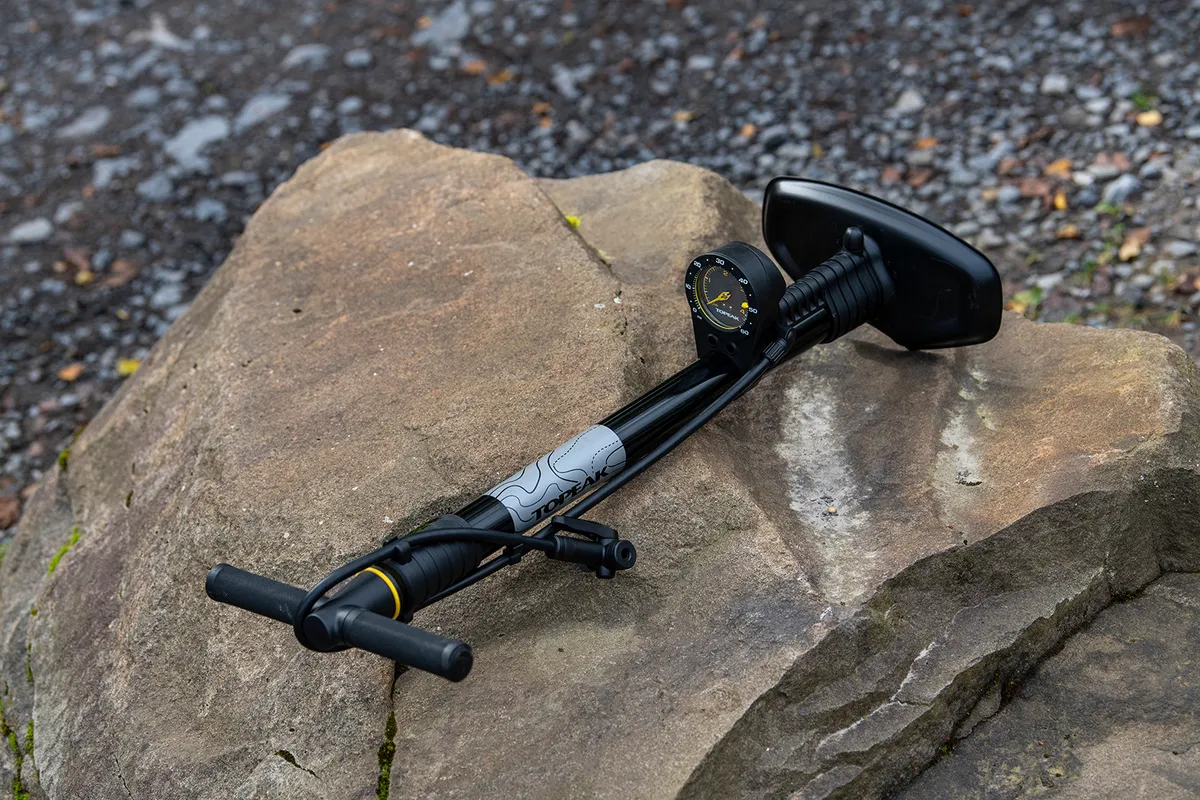
- £55 / $70 / AU$100 as tested
- Pros: Good efficiency; easy-to-read gauge; enough volume to seat tubeless tyres
- Cons: Short hose; not the most stable
With its high-volume metal barrel, the mountain-bike specific Joeblow gets tons of air into tyres with just a few strokes and seats tubeless mountain bike tyres easily.
The head has a large locking lever, with separate holes for each valve type. There’s a big bleed valve near the base for fine-tuning pressure, via the large, easy-to-read gauge located midway up the barrel. A rubberised handle and smooth action add to the comfy, solid feel.
It’s not quite as stable as we’d like, though, and the hose isn’t that long, so using it on bikes mounted in a workstand is tricky. The high volume also means a stiffer action, and it only inflates to a max of 60psi.
SQUIRREL_13086310
Zefal Profil Max FP60 Z-Switch
SQUIRREL_TEXT_13179479
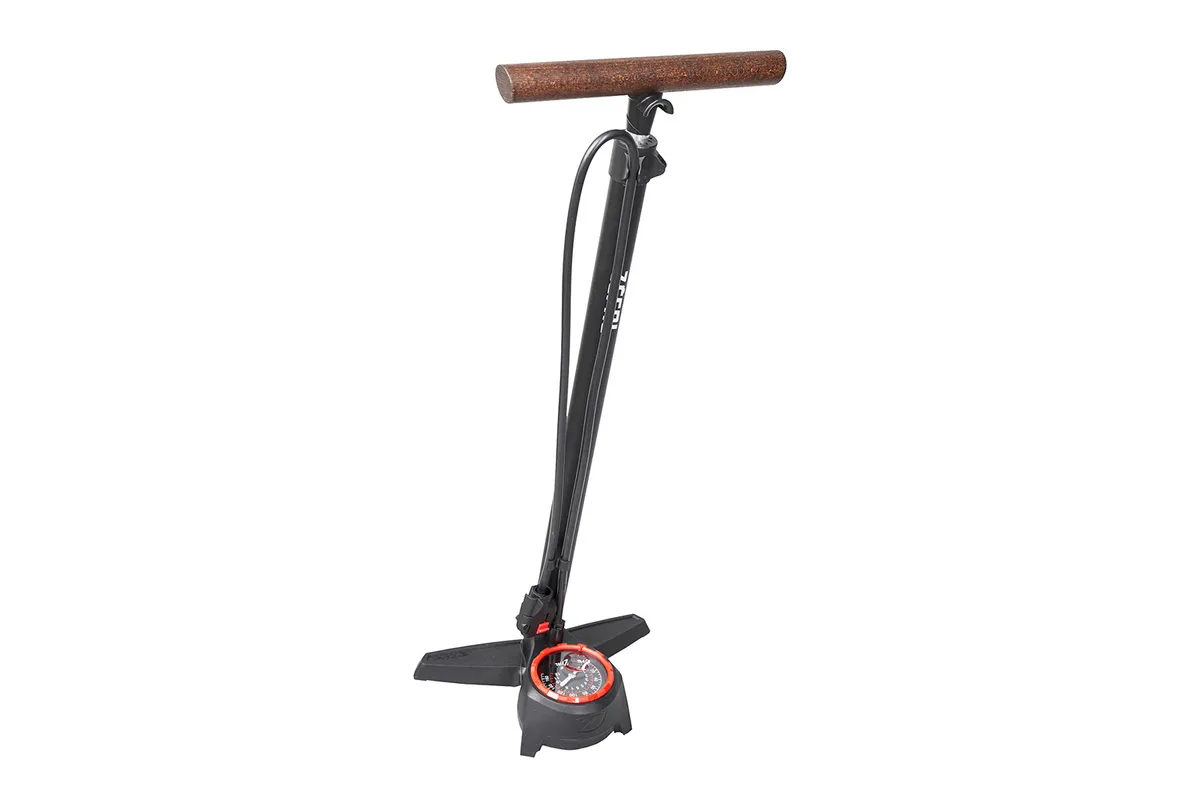
- £52 / €60 as tested
- Pros: Efficient for high and low pressures; easy to attach; alloy construction
- Cons: Head feels a little unrefined
The Profil Max FP60 Z-Switch features a premium-feeling alloy construction with a beech-wood handle. A long stroke length of 51.5cm makes the Profil Max efficient at both high and low pressures.
A Z-Switch head system uses a locking lever that is quick and easy to set, and it can be used with all types of valve.
The dial features an in-built magnifier, which makes reading the pressure in your tyres easier, while the four-footed base provides good stability for aggressive pumping.
Our only gripe was the Z-Switch head feels a little unrefined and may be slightly biased.
SQUIRREL_13179479
Best mini pumps of 2025
Lezyne Grip Drive HV Long
SQUIRREL_TEXT_13108572
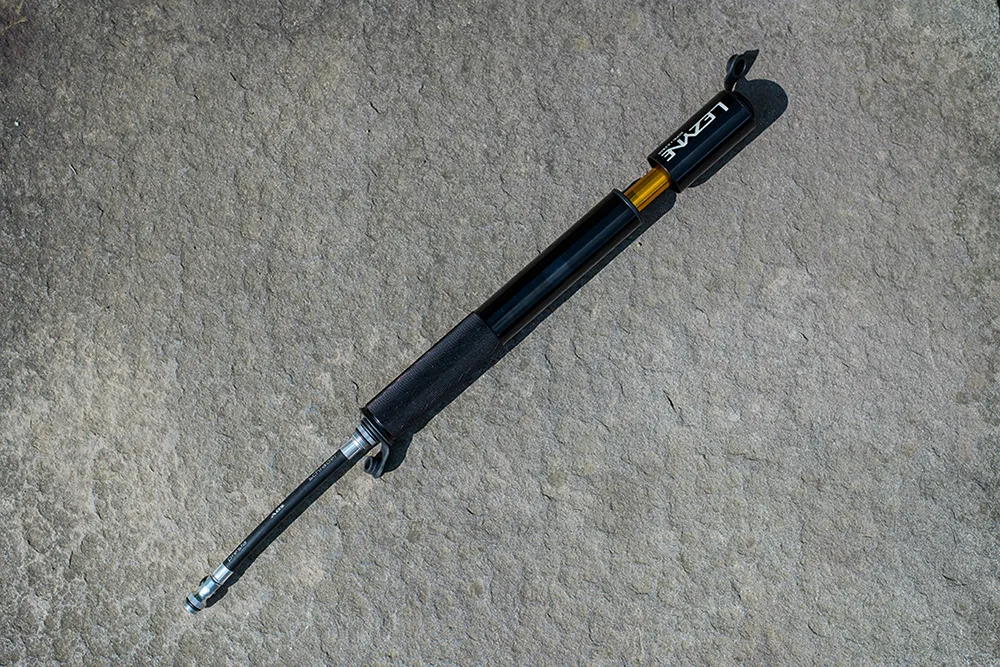
- £33 as tested
- Pros: Decent performance for its size; good ergonomics; reasonably priced
- Cons: Screw-on hose is slow
Not only does the Lezyne pump have a great weight-to-performance ratio, it’s reasonably priced, too.
The textured barrel provides grip for your palms and its design ensures your skin is kept out of harm’s way. It also adds to the pump’s well-built feel and good looks.
The screw-on hose attaches to the valve securely and rubber caps do a good job of keeping gunk out.
It takes a little longer to set up for use than some others and the small mounting bracket allowed the pump to rub against our frame.
SQUIRREL_13108572
OneUp EDC 100cc
SQUIRREL_TEXT_13152862
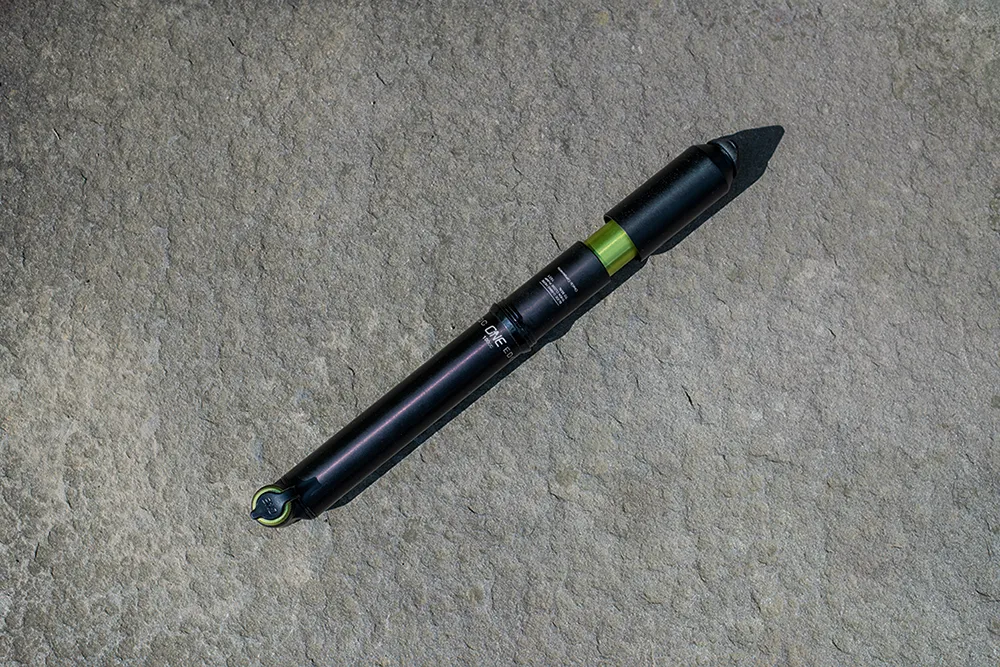
- £54 as tested
- Pros: Quality construction; great ergonomics; large volume
- Cons: Pricey; not the lightest
The rattle-free, machined-aluminium build of this EDC pump feels second to none. It’s comfy in use and there’s no pinching of skin when compressing the handle.
Due to its large volume, each stroke takes a fair amount of effort, especially at higher pressures, but this does mean it inflates tyres in no time.
It’s easy to use, with a push-on valve attachment and while there is no locking mechanism it's still very secure. The pump can also house OneUp’s EDC tool (sold separately).
Its size and weight mean it’s best fixed to your bike or put in a pack (although OneUp does sell a shorter 70cc version) and it is pricey.
SQUIRREL_13152862
OneUp Components 70cc EDC Pump Kit
SQUIRREL_TEXT_13152862

- £160 / $160 / €160 as tested
- Pros: Comprehensive tool set; can be transferred between bikes; good pump action
- Cons: Pricey; hard to get purchase with slim multi-tool; fiddly
While featuring an effective pump, the 70cc EDC Pump Kit also includes a multi-tool, tyre levers, chain breaker and spoke keys, quick-link storage, a spare rotor bolt and a Presta valve-core tool.
These are stored inside the pump, making use of the large-volume cylinder and keeping everything compact.
The pump itself has a good action, with the head doubling up as a CO2 inflator, adding to the versatility.
It is on the expensive side and the slim multi-tool is fiddly, making it difficult to lever tight bolts.
SQUIRREL_13152862
Riverside Mountain Bike Hand Pump
SQUIRREL_TEXT_13179481
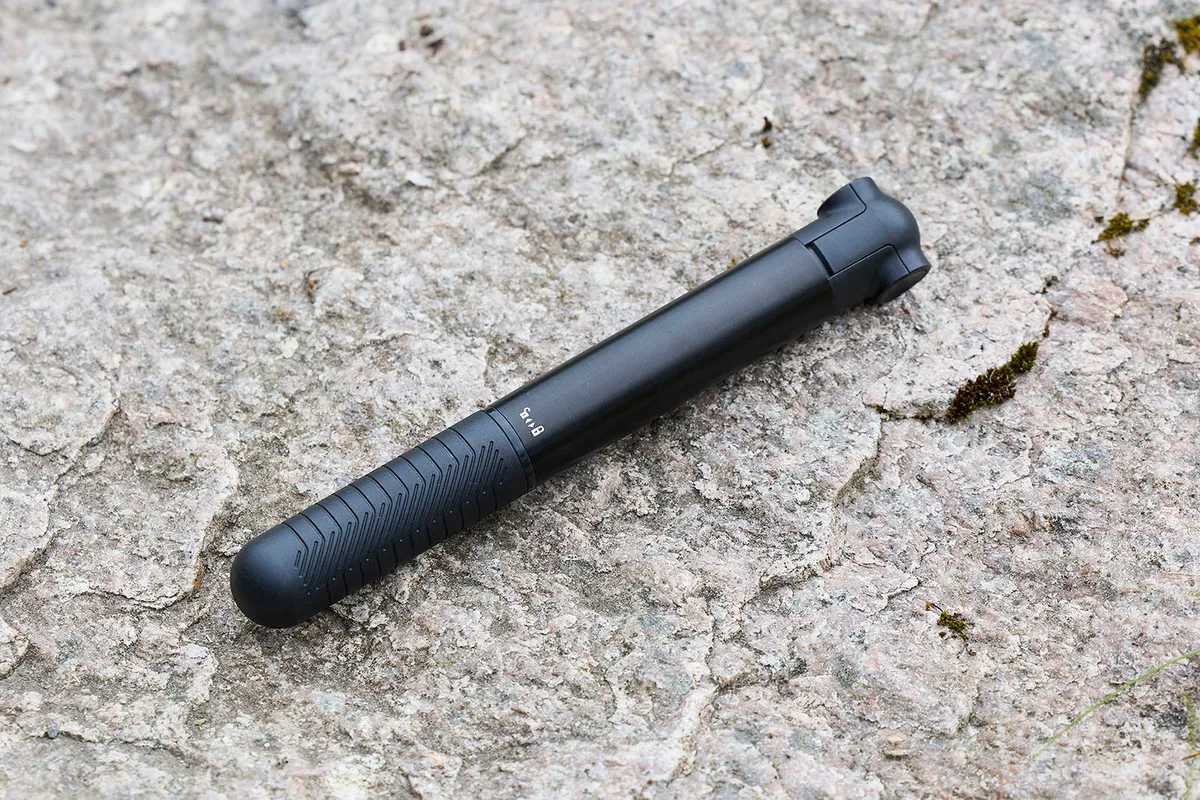
- £14 as tested
- Pros: Easy to attach; efficient; smooth stroke
- Cons: Not the lightest
This Decathlon pump has a build quality and feel that help it punch above its weight, in terms of price.
Speaking of weight, it’s chunky, so you’ll have to store it in a pack, because it doesn’t come with a frame mount and is too big for a pocket.
It uses a screw-on chuck for both Presta and Schrader valves, and the fitment is tight, secure and relatively easy to attach.
The pull-out hose even has a protective cap to help keep grime out. While the barrel is made from aluminium, the handle is comfortable textured plastic.
The smooth stroke pumps out plenty of air, making it the second most efficient pump on test; it never felt like we had to work too hard to keep pumping.
The handle twists to lock it in place when not in use, which is a nice touch. All in, it's a great little pump for the price.
SQUIRREL_13179481
Silca Gravelero
SQUIRREL_TEXT_13086908
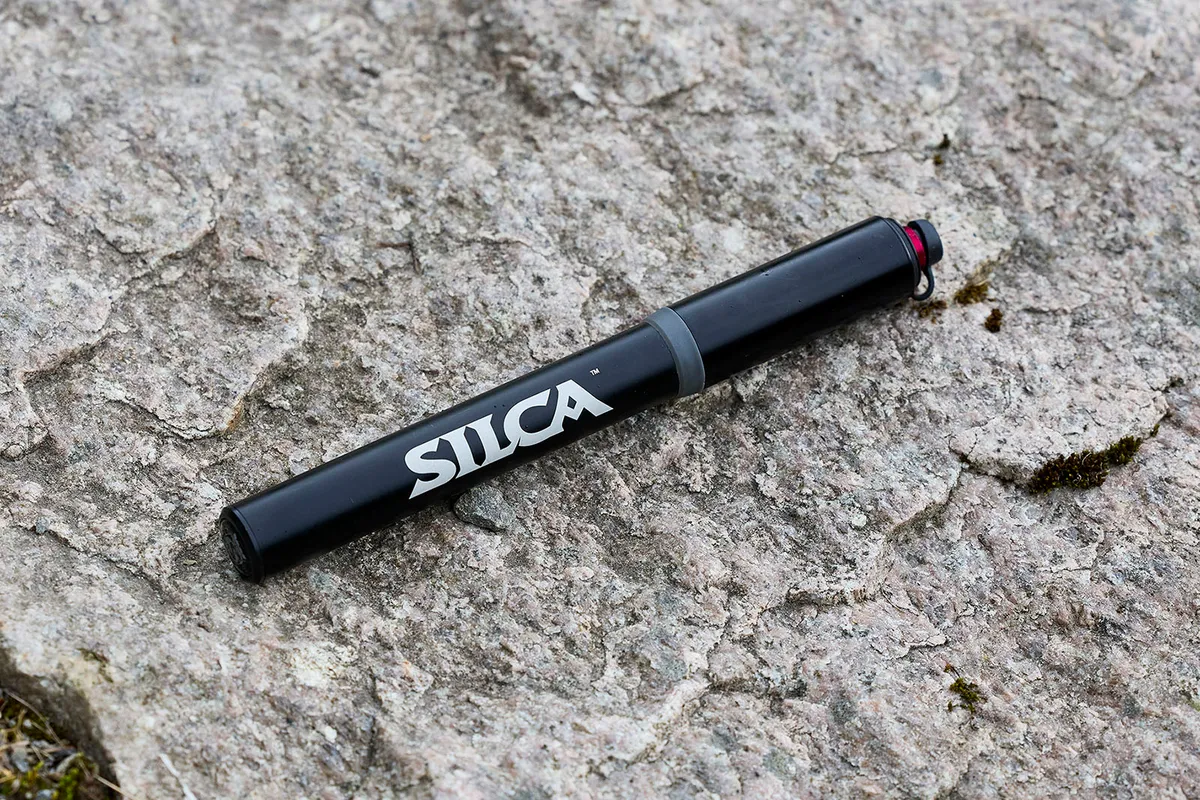
- £74 / $75 / €90 / AU$133 as tested
- Pros: Impressive construction; little effort required; solid attachment
- Cons: Hose cover could be more substantial
Fortunately, given the price tag, the Silca feels extremely well-made and has a smooth action and nicely machined, reversible chuck.
The only letdown is the flimsy rubber hose cover, which lets mud and water in. Its aluminium build and 24cm length mean it’s light, and it comes with a nifty frame mount that holds it securely.
The pull-out, retractable hose is quick and easy to use with its push-on chuck and flip-up locking mechanism.
This holds the pump solidly in place on both Presta and Schrader valves, although you need to switch manually between them.
The moderate stroke volume balances the number of strokes needed with the effort required. It inflated our tyres admirably, but not the fastest.
Here, you’re paying for build quality over outright performance.
SQUIRREL_13086908
SKS AirFlex Explorer
SQUIRREL_TEXT_13077568
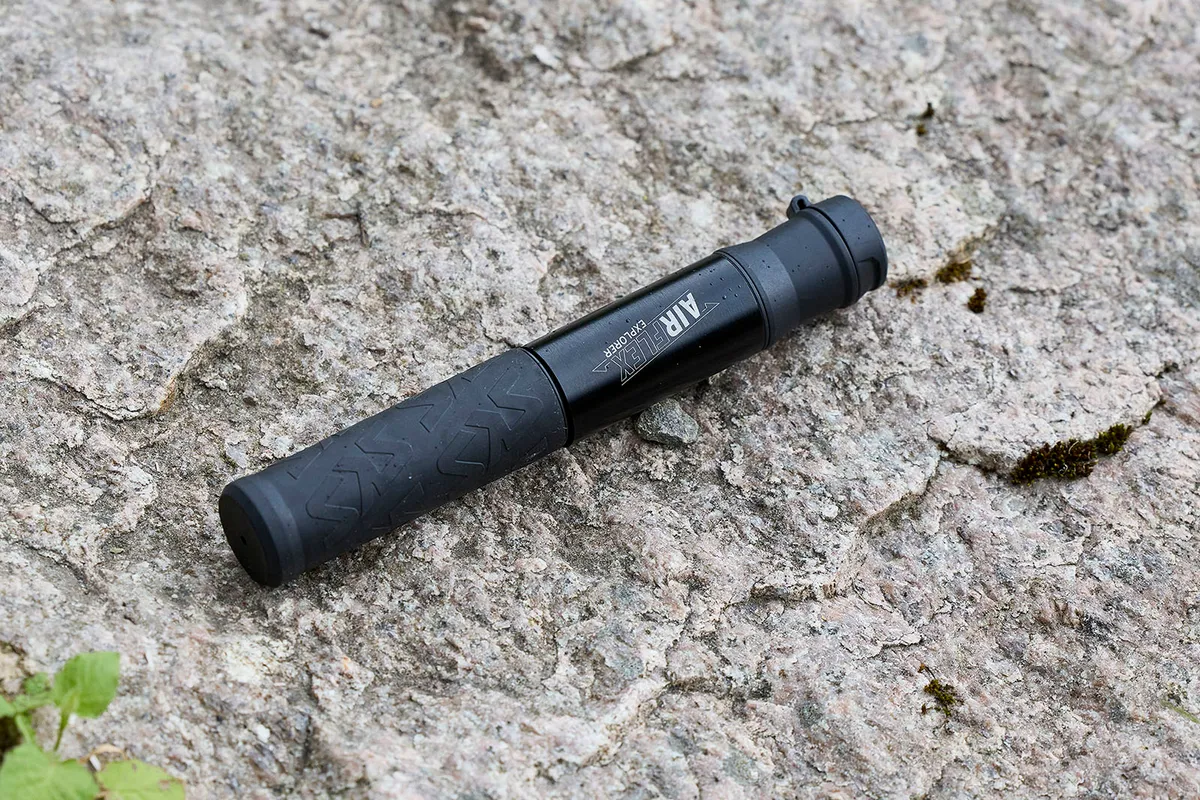
- £36 / $52 as tested
- Pros: Robust feeling; secure fit with both valve types; smooth stroke
- Cons: Screw-on chuck is quite fiddly
Made from a mix of aluminium and plastic-carbon composite, this stocky pump has a robust feel and a wide barrel diameter.
It's not overly long, at 20.5cm, weighs a respectable 136g and can be carried on the frame using the supplied bottle cage mount.
The pop-open dust cover helps keep mud and crud out of the head and conceals a short but practical pull-out hose.
While the screw-on chuck is fiddlier than a push-on version, it fits securely on both valve types.
With a smooth stroke and moderate air volume, the AirFlex Explorer gives a good balance of
pumping efficiency and effort, taking 202 strokes to inflate our test tyre.
The soft rubber handle is a highlight and affords a comfortable, secure grip on the pump.
SQUIRREL_13077568
Topeak Mountain 2Stage Digital
SQUIRREL_TEXT_13097163
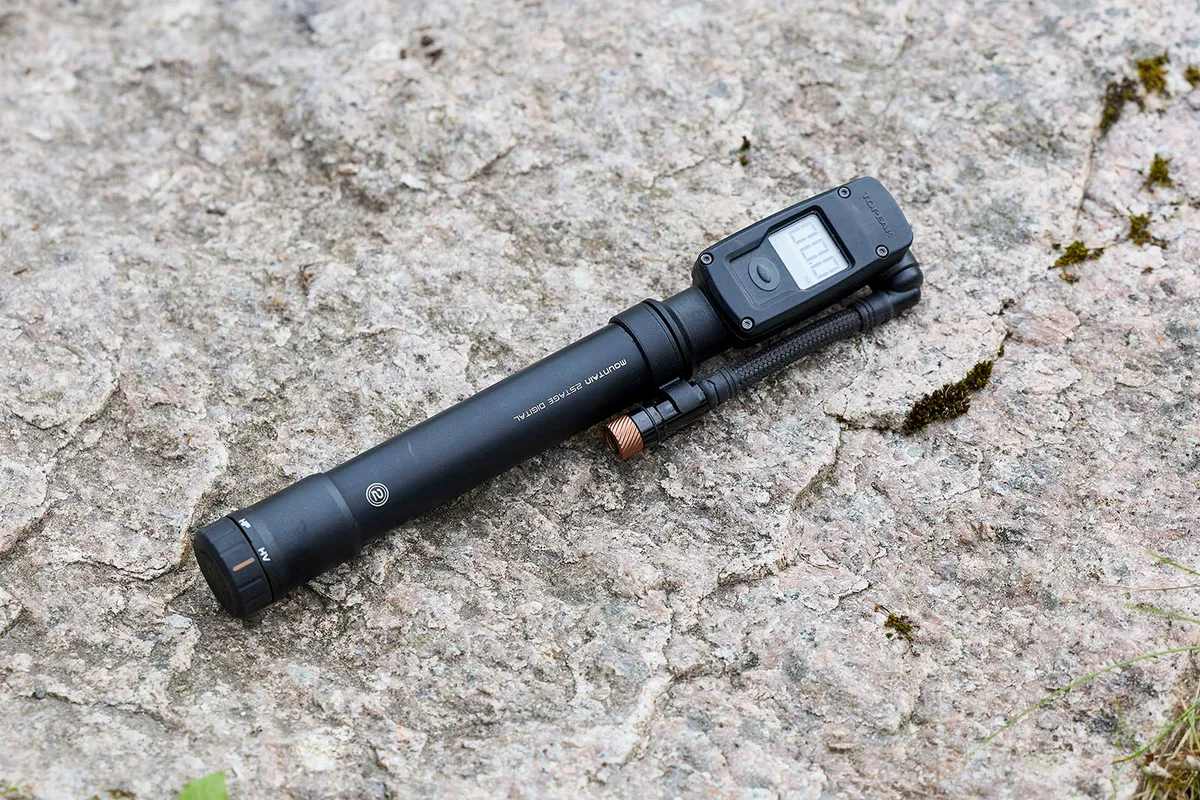
- £95 / AU$150 as tested
- Pros: Impressive construction; good versatility; comfortable ergonomics
- Cons: Pricey; a little fiddly to attach the chuck
Topeak has combined a mini pump with a shock pump here, making the steep price seem more reasonable.
The pump feels impressive, with its aluminium barrel and solid-plastic details, and is comfortable to hold.
At 223g and 23cm long, it’s best stored in a pack (no frame mount is supplied).
The chuck fits both valve types, for inflating tyres and air-sprung suspension, and although it’s fiddlier to attach than one with a lever, it does give an air-tight connection.
It’d be good if it had a cover, though.
In high-volume mode, the Mountain 2Stage Digital inflates tyres adequately with a nice smooth operation, and the digital pressure gauge is accurate.
If you ride with a pack and like to tinker with settings, this is a smart choice, even for the money.
SQUIRREL_13097163
Topeak Mountain DAG
SQUIRREL_TEXT_13108573
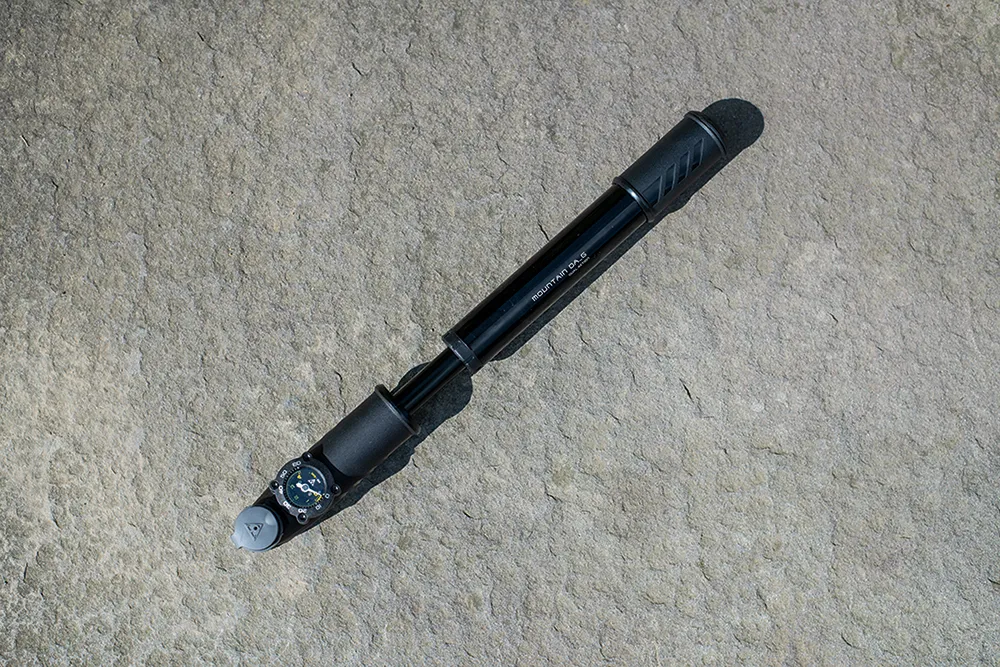
- £32 as tested
- Pros: Well-priced; good pump action; accurate and clear pressure gauge
- Cons: Quite tiring; occasionally pinched skin
If fast inflation is your key consideration, the Topeak Mountain DA G offers maximum bang for your buck with its dual-action stroke and reasonable price.
The pressure gauge is accurate and clear, the push-on valve connection holds in place well with a locking tab, and the build quality is good. Its mount held it away from our frame, too.
Your arm never gets a rest because air is pumped on both the instroke and the outstroke. It occasionally pinched our skin while pumping.
The styling isn’t that appealing and it’s also bulky.
SQUIRREL_13108573
How we test bike pumps
We test bike pumps by inflating tyres up to real-world pressures indoors and on the trails or road side.
Having reviewed hundreds of bike pumps over the years, our testers have a keen eye for what makes a bike pump great.
Ultimately, our bike pump reviews are based on the following criteria:
- Efficiency: how quickly does a pump inflate a tyre?
- Versatility: does the pump offer any other functions?
- Action: is the pump easy to use?
- Ergonomics: how does the pump feel in the hands?
- Value: how does the pump compare to others in the market? Are you getting a good deal?
Why you can trust BikeRadar
BikeRadar has been an authority on bikes and cycling tech since its inception in 2007, delivering the world’s best riding advice.
We have experts testing all types of bikes, parts, clothing and accessories, from road, mountain and gravel bikes to commuting, bikepacking and electric bikes.
Our reviews are always editorially independent – with no exceptions. Our reviewers comprehensively test all products in the real world, always reflecting on performance, value and the wider market when delivering their verdicts and review ratings.
We have more than 15,000 product reviews available at your fingertips, as well as expert buying, maintenance, training, skills, health and fitness advice.
Our annual Bike of the Year test is an industry benchmark and the BikeRadar team consists of some of the most experienced riders and testers in the business.
Bike pump buyer’s guide
Knowing how to pump up a bike tyre is an essential skill for cyclists, and a bicycle pump is one of the most basic, mandatory tools to own if you want to carry out your own bike maintenance.
Pumps are designed to serve a very simple purpose – that of adding air to your tyres. Despite this, many pumps seem to fall short of the mark. So we’ve put together this guide to tell you about the different types of pumps and what to look for when buying one.
Types of bike pump
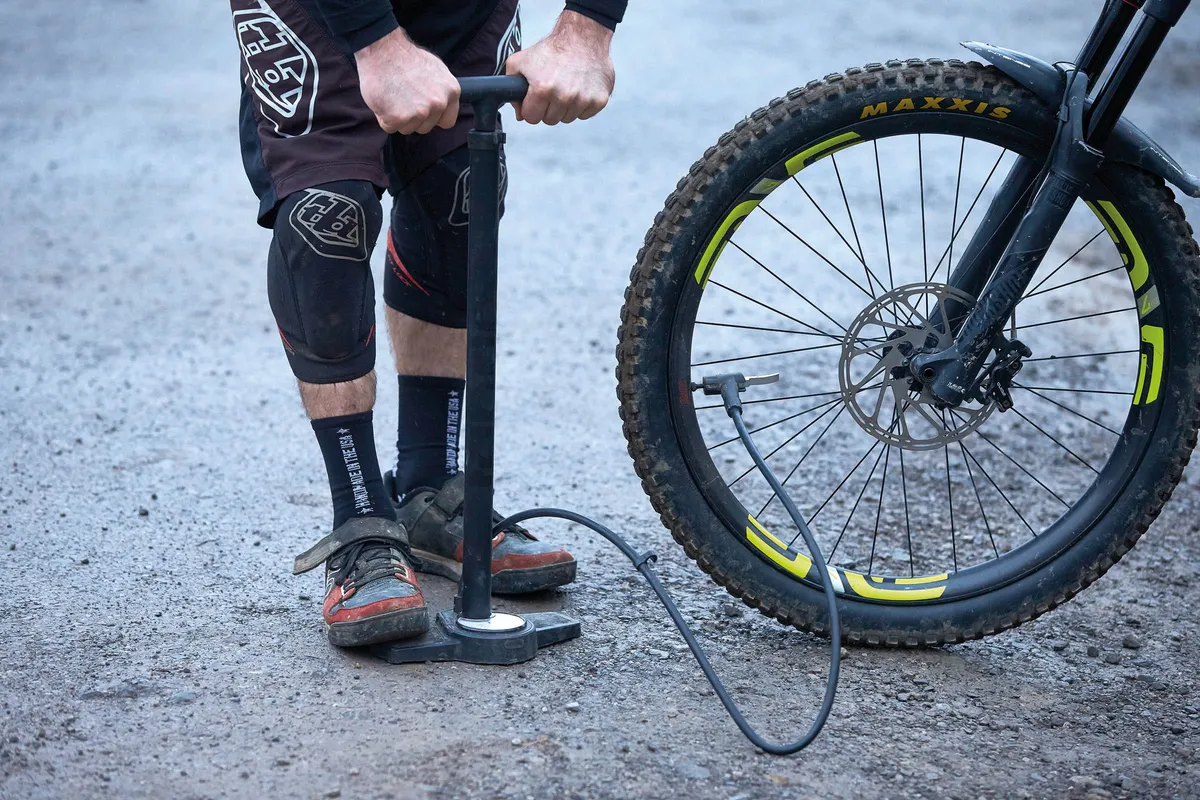
Track pump
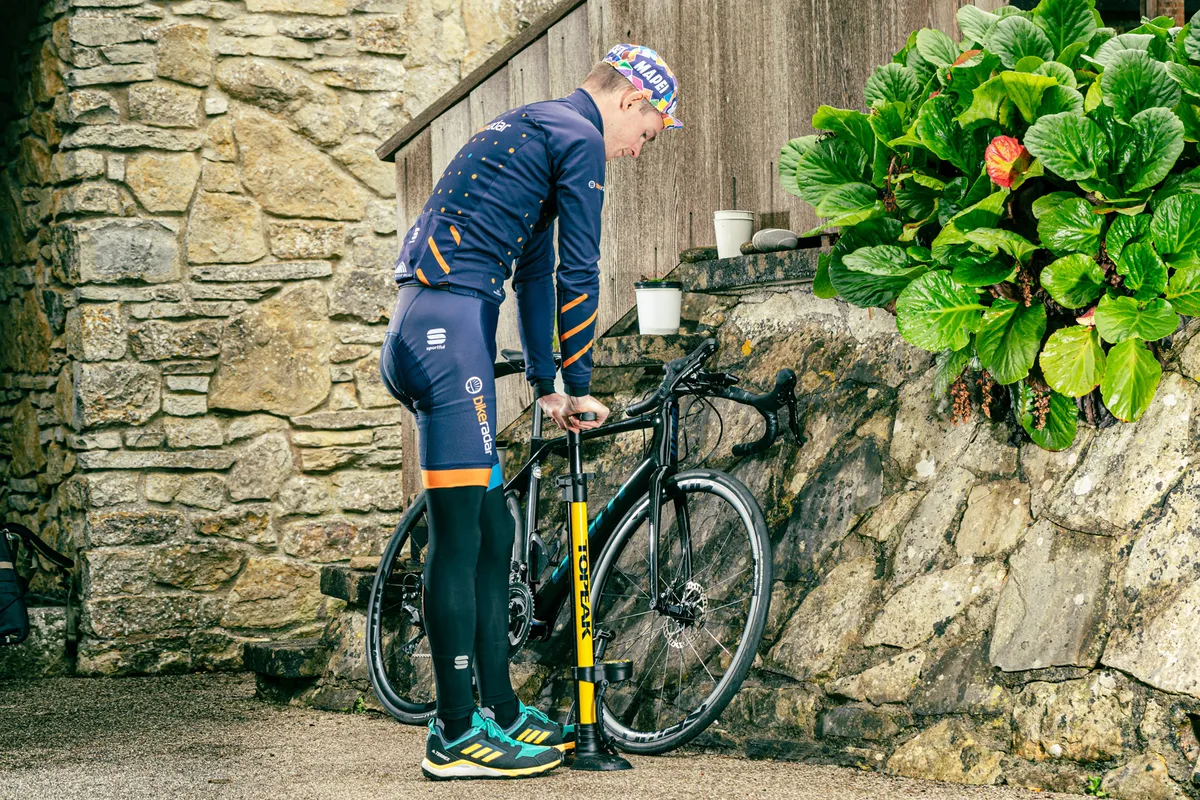
Every cyclist needs a decent track pump (also known as a floor pump), and if you’re building a home workshop it really should be one of your first purchases. This style of pump will almost always offer a long flexible hose, pressure gauge and large chamber for quick air transfer.
Hand pump
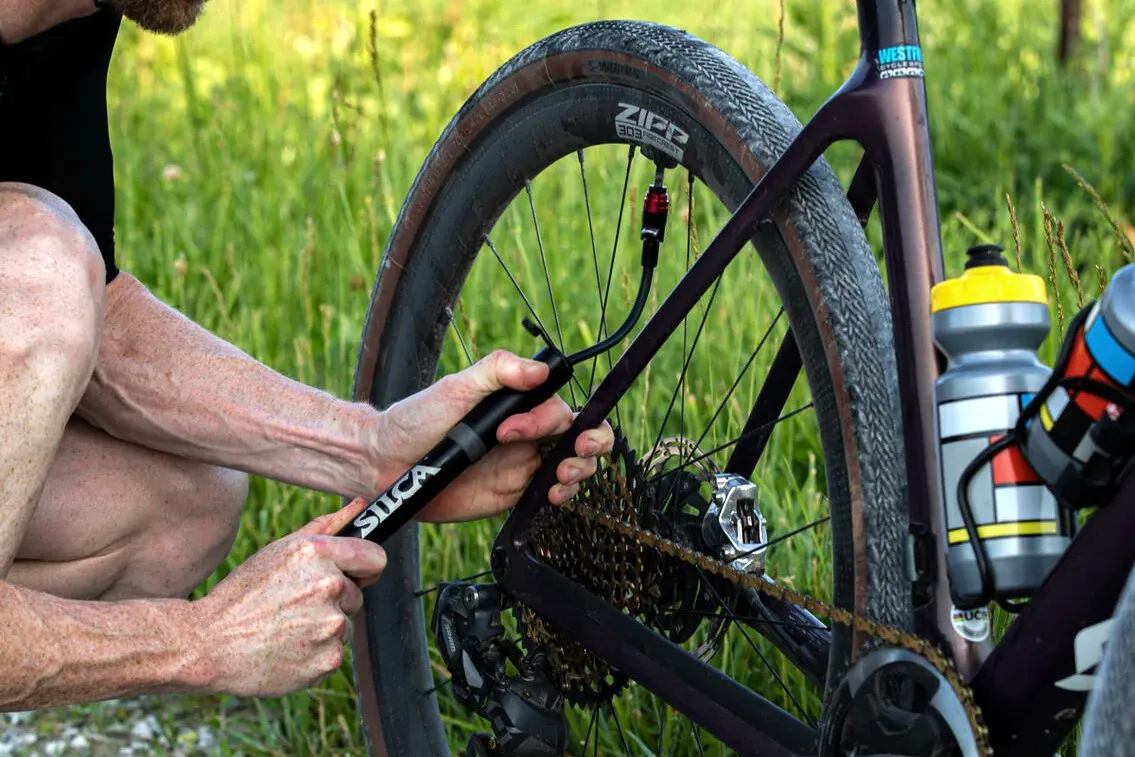
While a portable hand pump (or mini pump) can be used as your only option, it really shouldn’t be your first port of call.
Portable pumps are designed for emergencies or occasional use, and so are kept compact and light. With these size constraints come compromises.
The main issue is that these pumps stress the valve stem, eventually leading to a leaking or useless inner tube. There are pumps on the market that add a flexible hose to remove this issue, but you’re still left pumping longer than you would do with a track pump, and in many cases, not able to reach the ideal pressure.
Frame pump
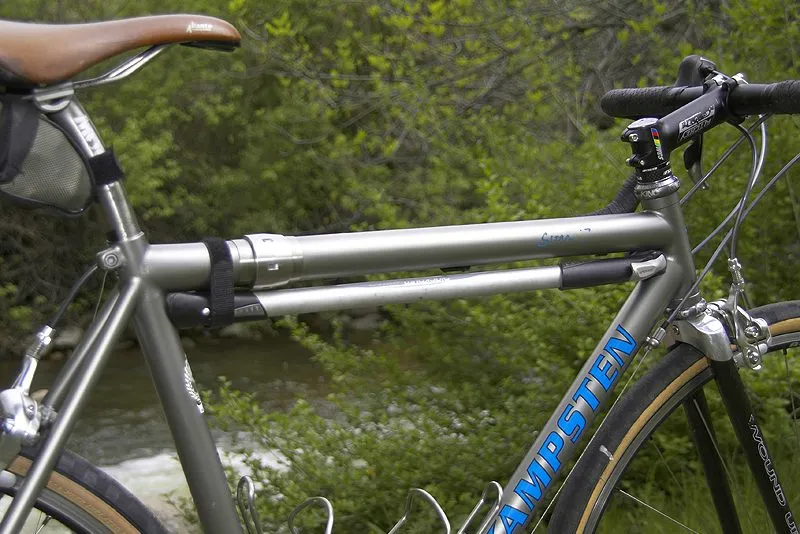
Effectively a longer, more efficient hand pump. A frame pump is designed to fit within the triangle of a bike frame. This allows the pump to be bigger, which often means a more effective hand pump. You’ll generally only find this style of pump on steel road bikes and touring bikes.
CO2 inflators
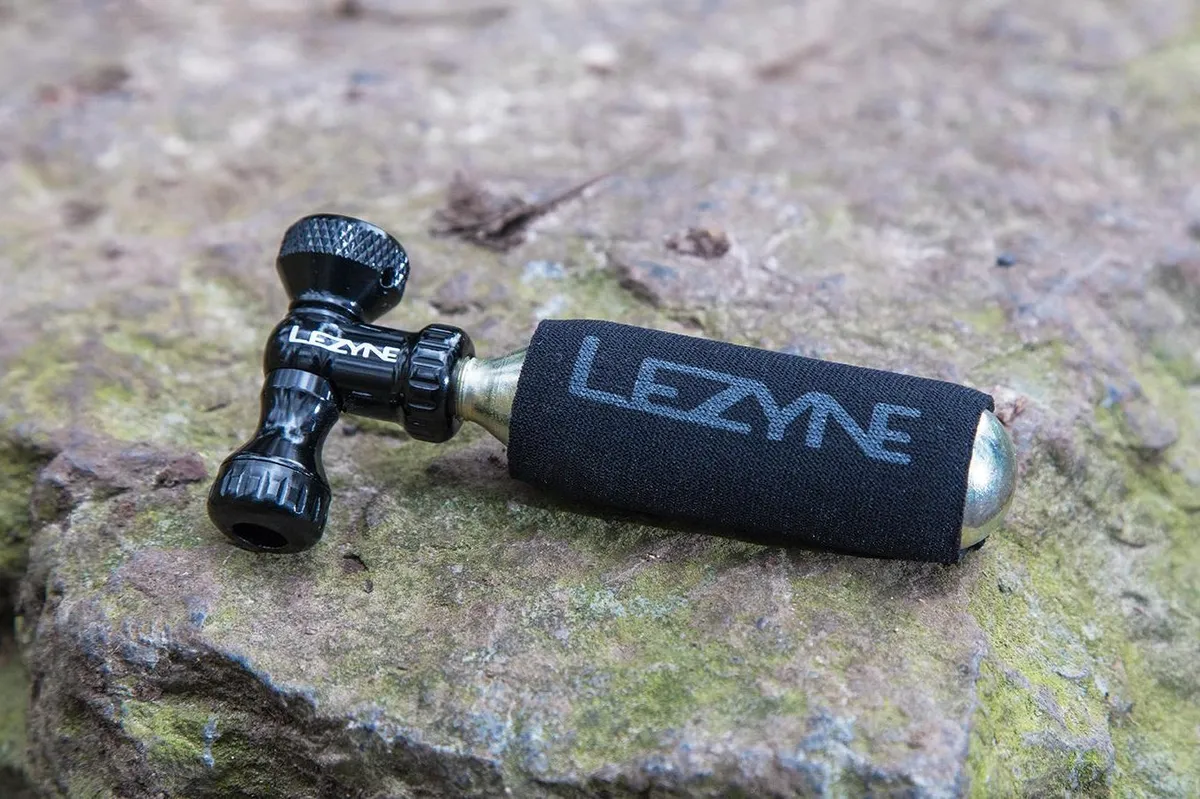
You can inflate your tyres in a hurry with compressed carbon dioxide. This should only be used in case of a flat out on the road or trail though because the cartridges are expensive and wasteful.
A common 16g cartridge will inflate a standard 700 x 23c tyre to about 100psi.
An issue with these inflators is that you only have as many attempts as there are cartridges. A way out of this is with a hybrid pump, this combines both a CO2 inflator and hand pump together, so you can use the CO2 if you’re in a hurry or save it if you’ve got time.
We have a list of the best CO2 inflators if this sounds like the right thing for you.
Shock pump
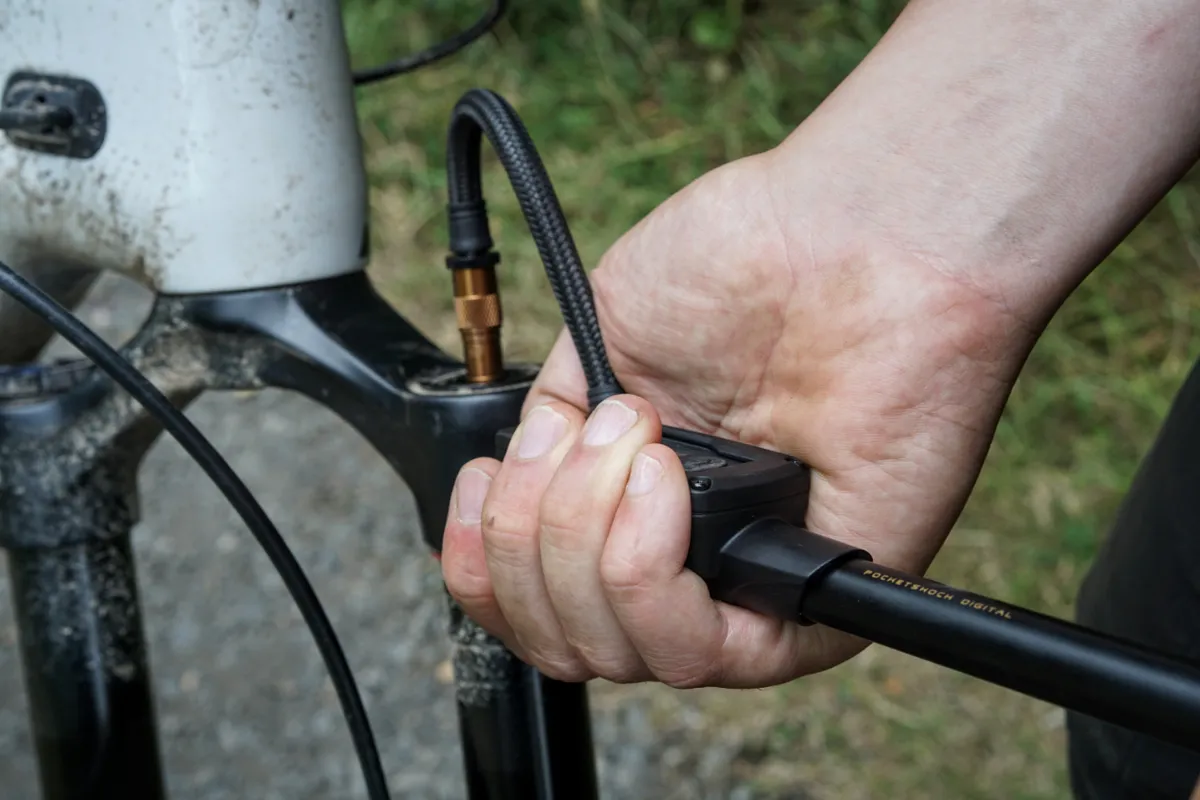
If you own a mountain bike with air-sprung suspension, it’s worthwhile investing in a shock pump. This high-pressure, small-volume pump will often have a max pressure of 300psi, allowing you to get the right pressure and then fine tune it.
Other options
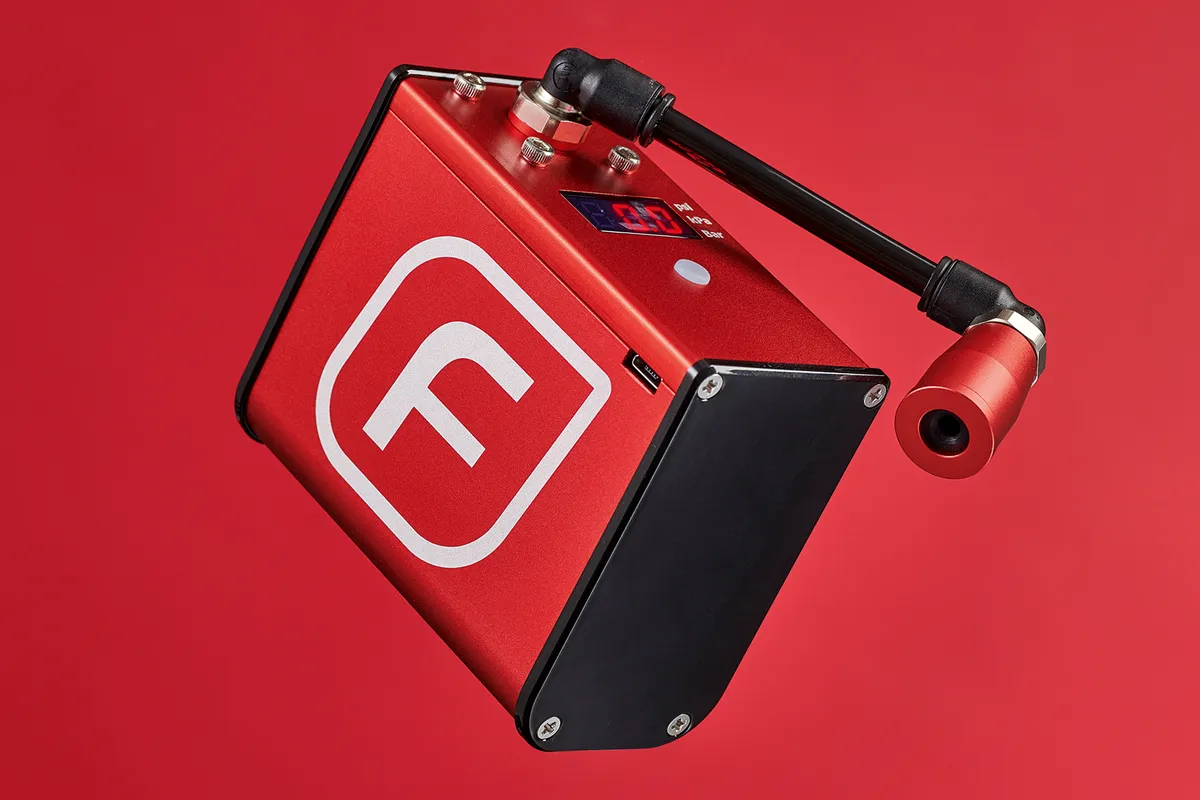
You could also consider a battery-operated air pump or air compressor.
The battery-operated air pump is popular among professional cyclocross mechanics – its electric-drill shape makes it easily portable and inflating light work, but its maximum pressure is limited and the good ones are expensive. Other options, such as the Fumpa, also exist.
Air compressors are the go-to option in bike shops and are especially handy when seating tubeless tyres, but are more expensive, very loud and casual users will sooner reach for a floor pump than switch on the compressor.
Things to consider when buying a bike pump
Pressure needed
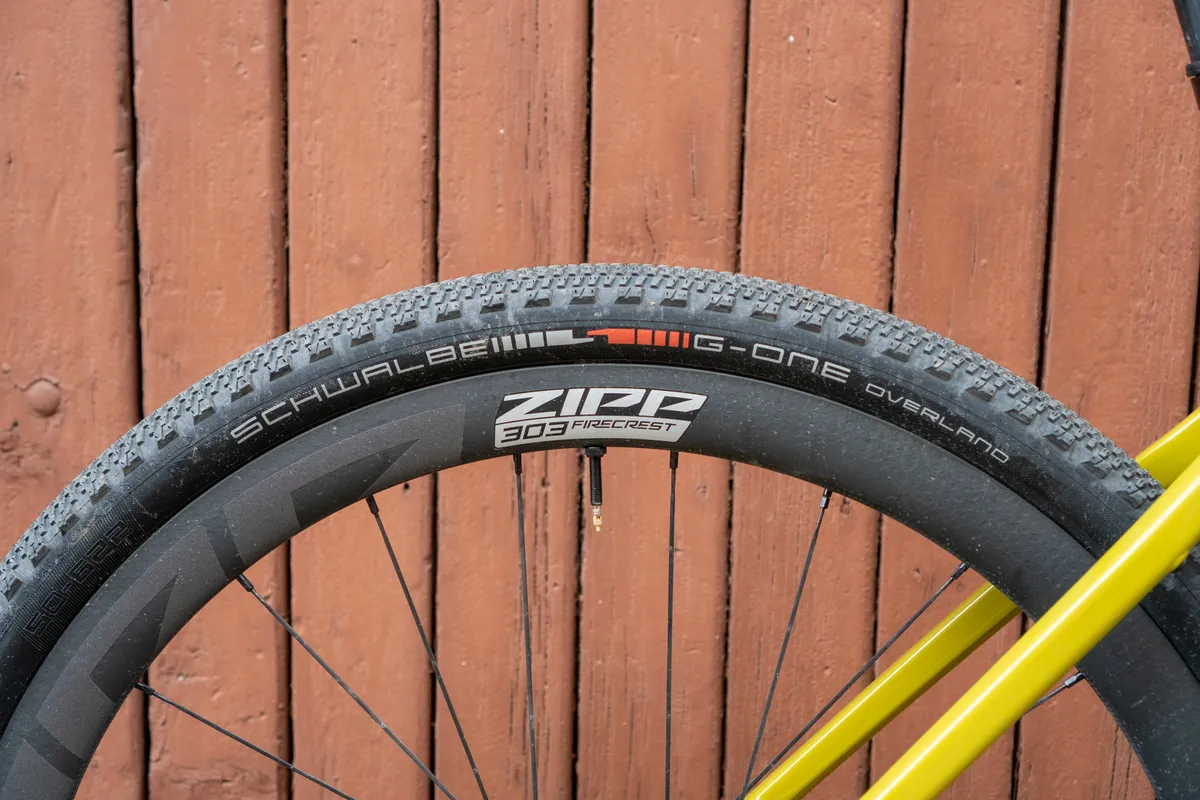
Not many people really need a pump that goes to 260psi and even a committed mountain biker probably won’t need above 40psi. A higher-pressure pump is often a trade-off for volume output, or at least gauge accuracy. Because of this, brands such as Lezyne offer pump models specific to road or mountain biking.
Volume needed
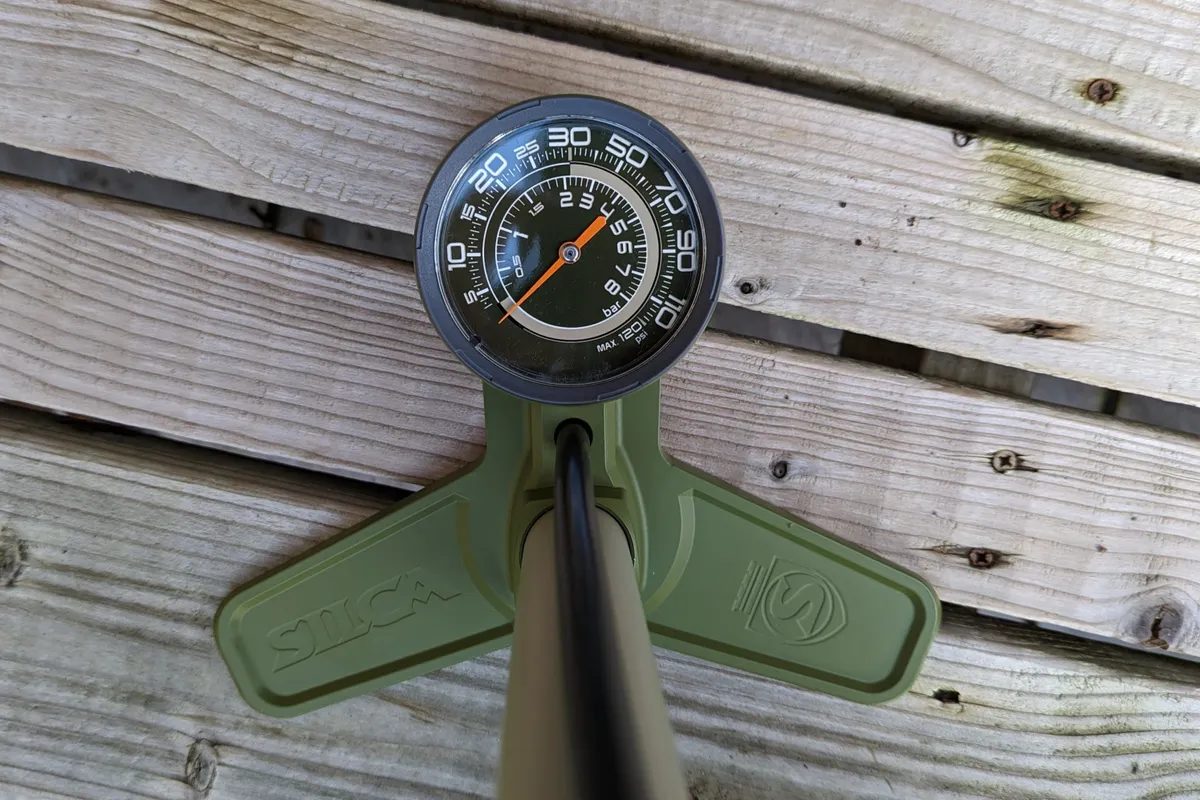
Much like pressure, this will depend on your main bike choice. A high-volume pump will mean it takes fewer strokes to reach your desired pressure, but in turn, will generally mean a lower maximum pressure.
As mountain bike tyres have far greater volume (and lower pressure), a large-volume pump is more important here. If you have tubeless tyres, a pump with a massive volume output may be enough to seat a tyre without needing an air compressor.
Gauge accuracy
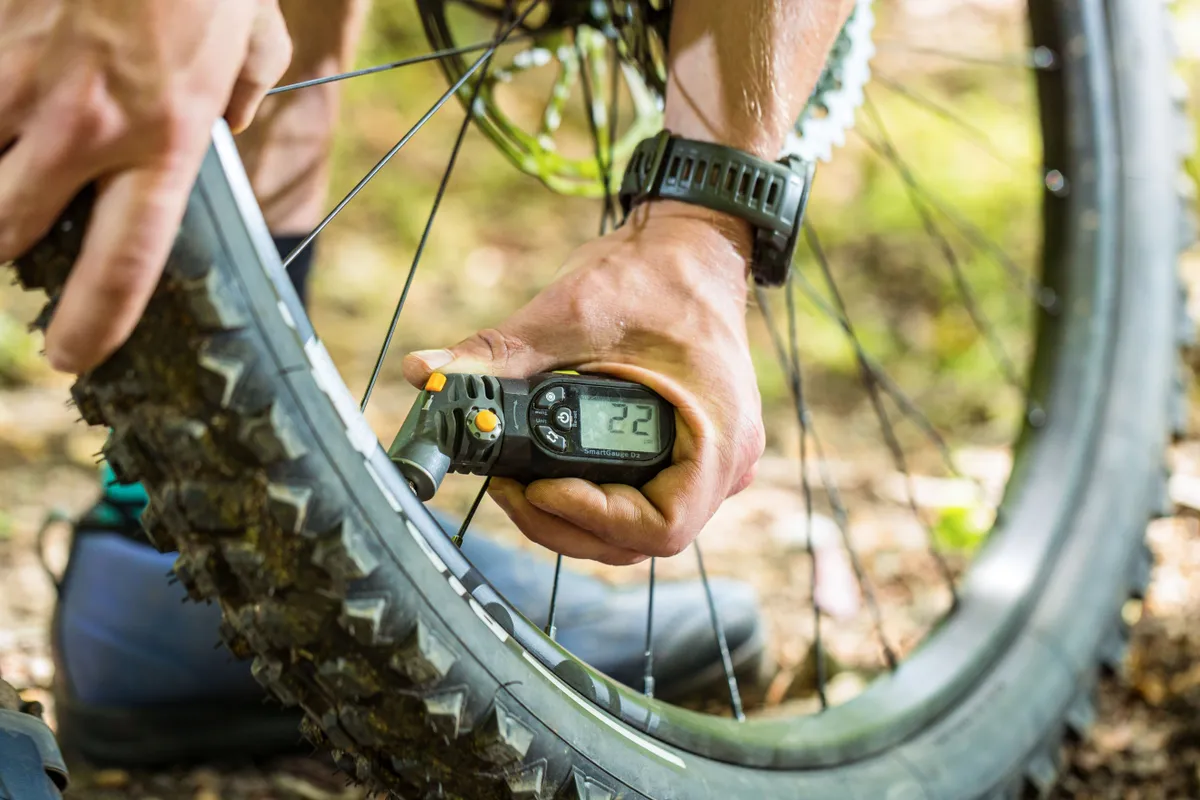
Few hand pumps include a gauge, but any decent track pump should.
Look for a gauge that’s easy to read and offers a suitable pressure range for your needs. Gauges are generally most accurate at the middle of the range, so if you’re trying to accurately inflate your mountain bike tyre between 23 and 25psi you’ll need a gauge with a low-pressure accuracy (or just a separate pressure gauge).
A pump with a digital gauge is also an option if you’re looking at more expensive options.
Pump heads and valve types
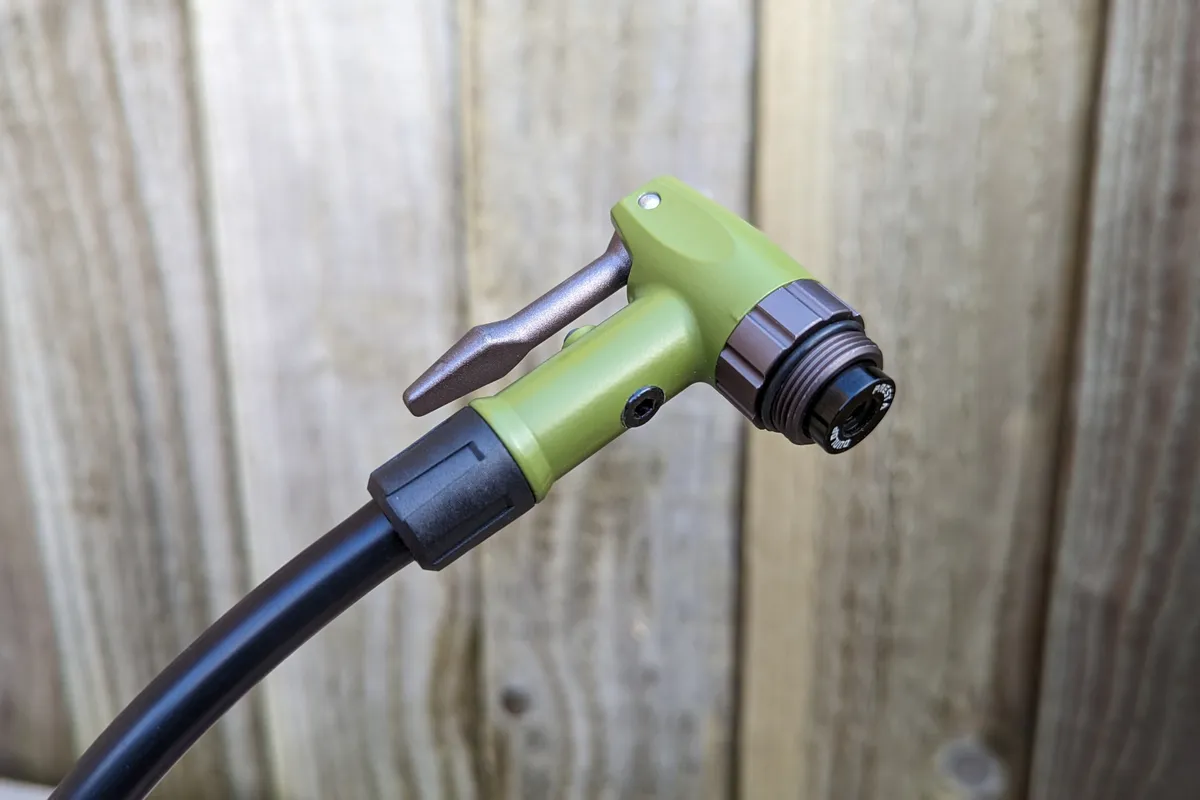
Presta (racing style) and Schrader (like on a car) are two of the most common valve types. Nearly all pumps these days will cater for at least Presta and Schrader, but not all are as simple as others.
Some pumps are valve-specific, others must be changed internally to fit various valves. A twin-valve head will have two separate slots for either valve, while a ‘smart-head’ will automatically adjust to the various valve sizes. Then there’s the thread-on style, which offers a reliable fit, but needs to be ‘flipped and changed’ depending on your desired valve.
If you use tubes or tubeless valves with a removable core, just be aware that some thread-on pump heads can unscrew the valve once inflated. For this style of valve, more common press-on style heads are best.
If you run tubeless tyres, check out our list of the best tubeless pumps and inflators.
Size
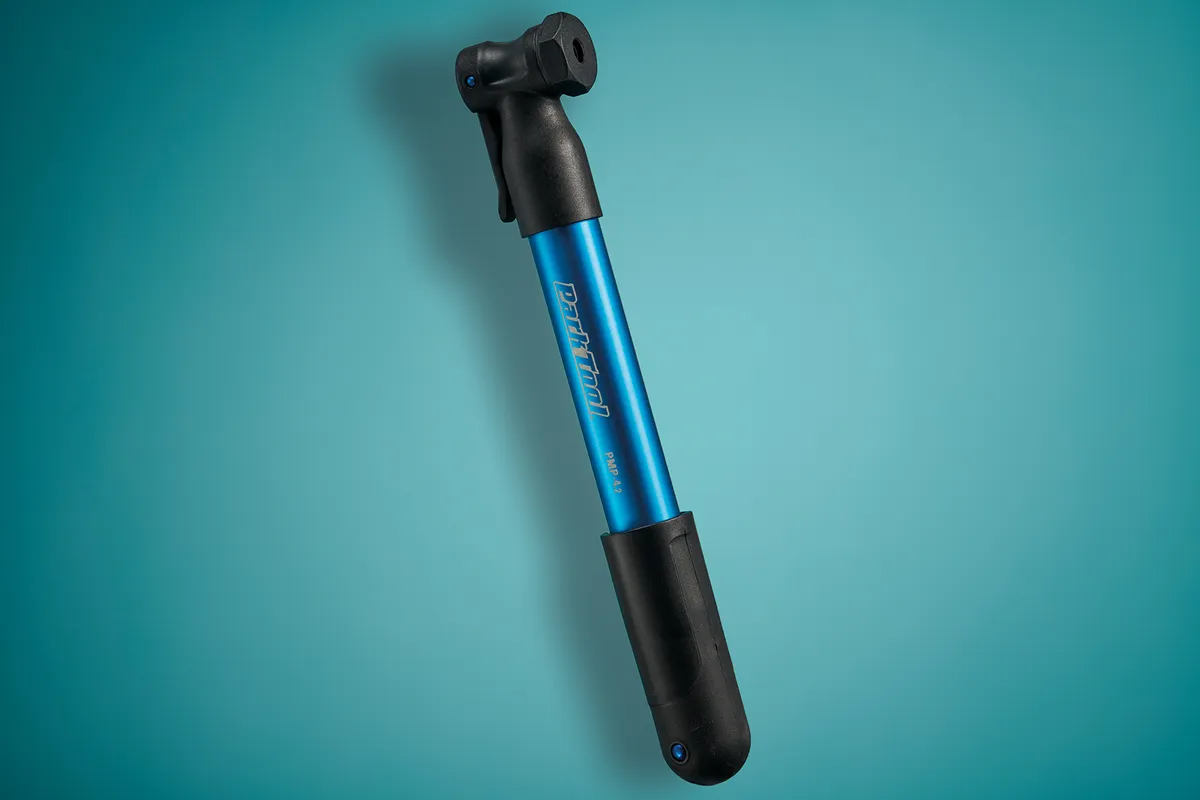
If your pump is going to stay at home, size isn’t going to be of great concern. But if you’re planning to carry your pump on a ride or take it in the car, then it’s an important factor in your decision. The smallest mini-pumps will eventually inflate a tyre, but are obviously limited on air volume.
Weight
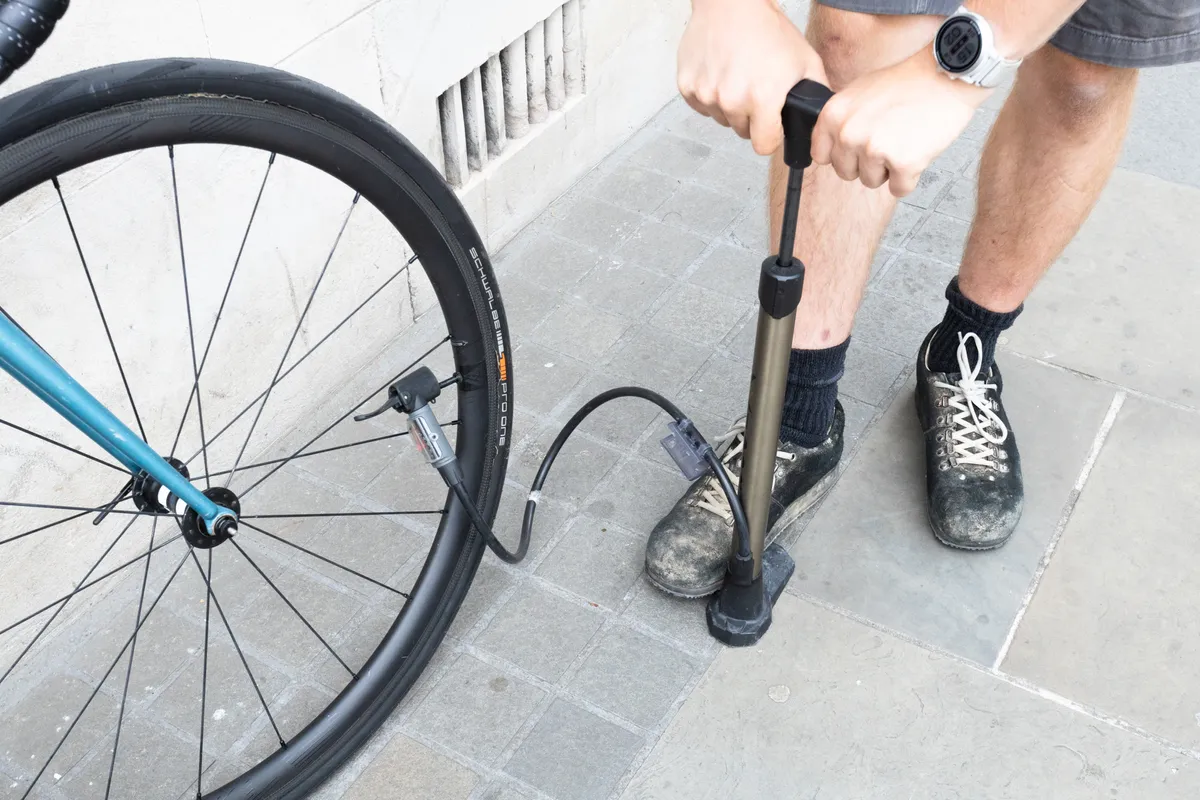
Much like size, weight isn’t a concern if the pump is going to be left at home, and here, a sturdy pump that doesn’t topple over is a bonus. But if you’re looking to carry it with you, then you don’t want anything too heavy.
The most expensive pumps are now made with lightweight aluminium, but there are plenty of plastic options, which are perfectly acceptable too. Don’t trade low-weight for something that’s just not suited to your needs, but at the same time, there’s no point carrying extra weight if you don’t have to.
Construction
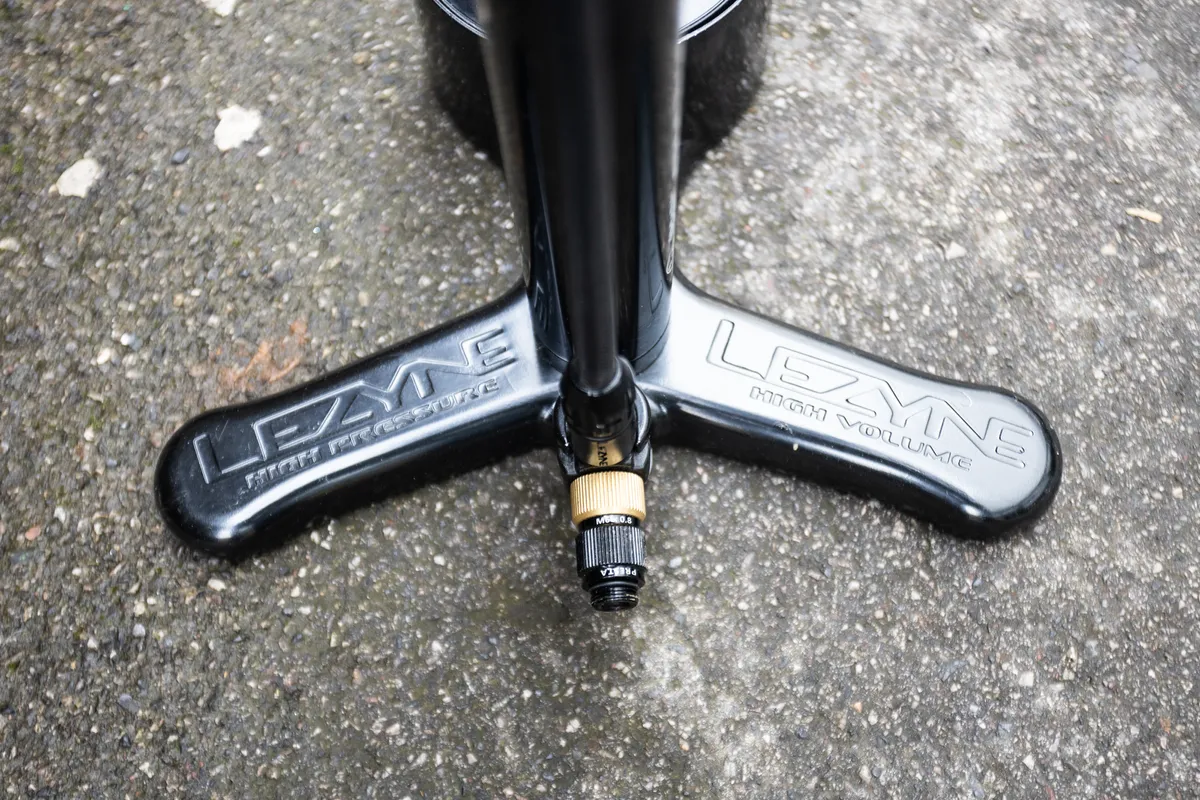
The quality of a pump’s construction is often in line with its price, and generally speaking the more expensive the pump, the more metal it contains.
For track pumps, the cheapest options are plastic and will flex and wobble under heavy use, eventually giving up. The metal ones are far more solid, keep going and are well worth rebuilding.
Serviceability
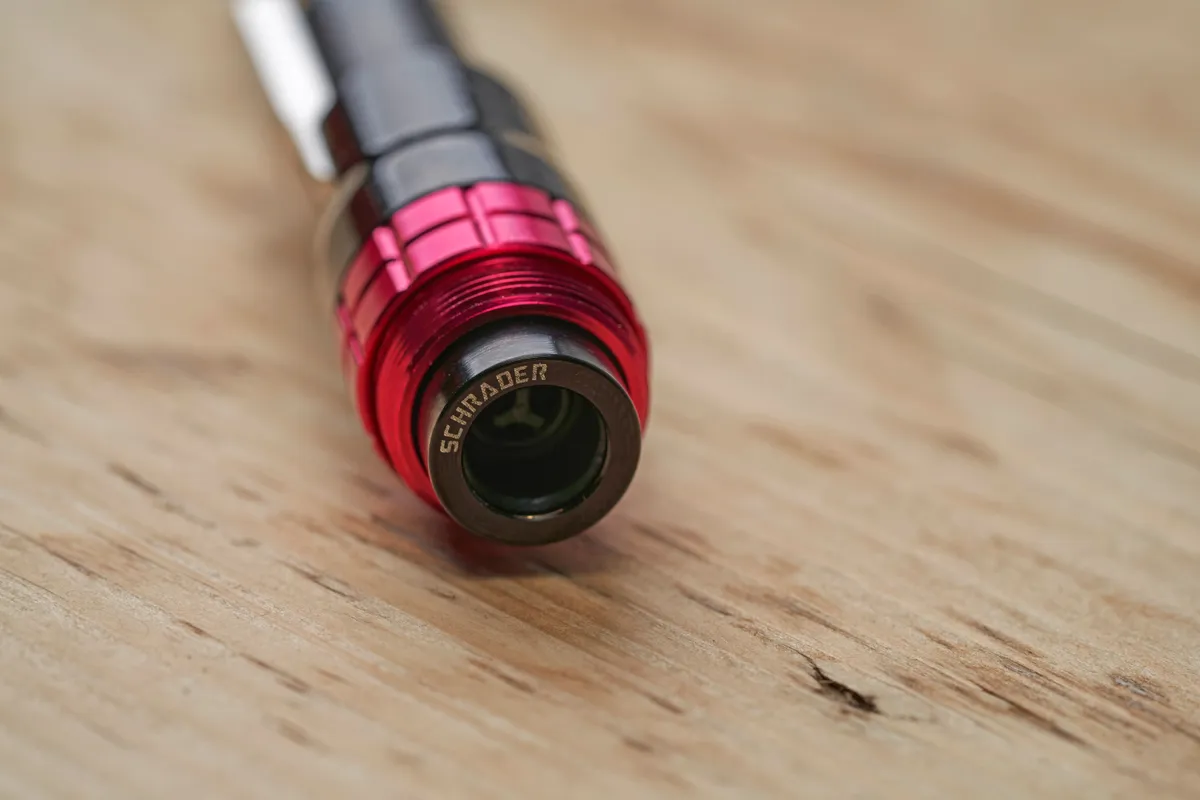
Serviceability generally applies to the more expensive pumps, which can be seen as a long-term investment.
Most main brands will offer a range of common spares to keep your pumps working. The most important spares are the head and valve gaskets because these will wear and begin to leak over time.
Don’t buy an expensive pump if spares are not readily available.
More essential tools
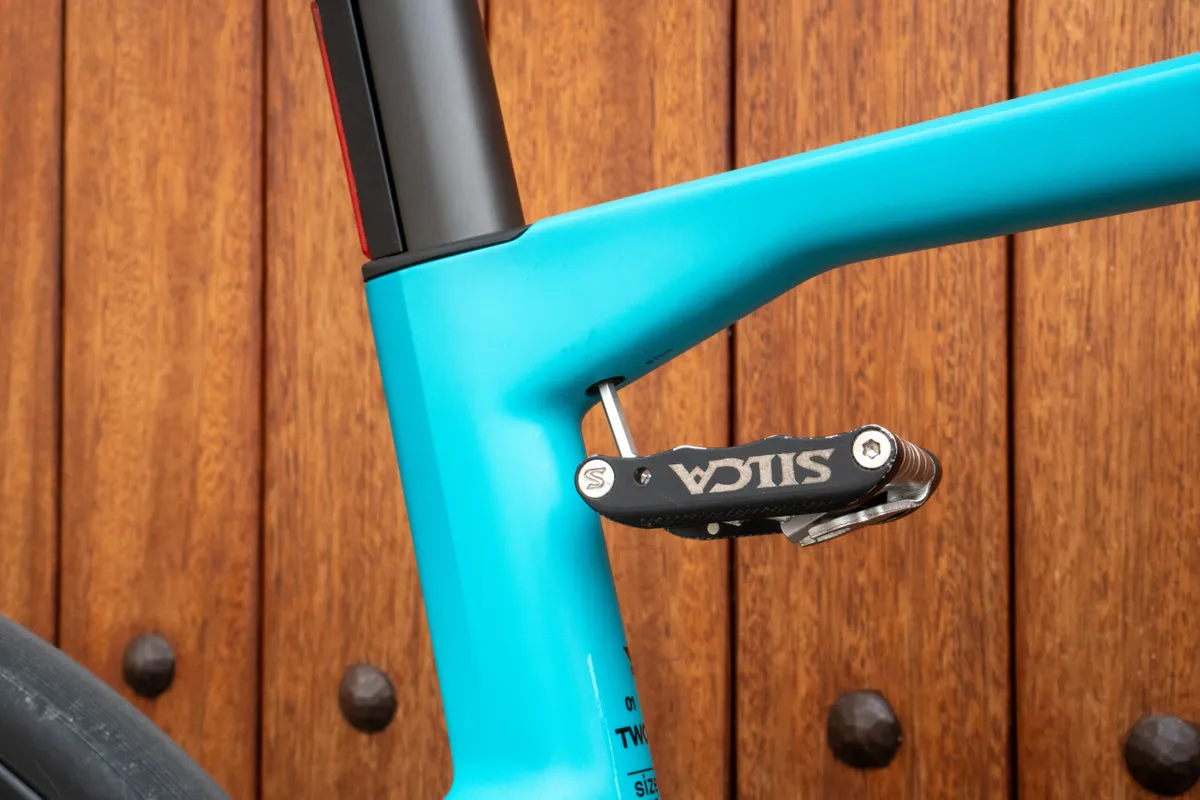
While a bike pump is one of the first things you should buy if you're getting into cycling, having a good multi-tool can get you out of trouble at home, on the roadside or out on the trails.
We've tested and shared what to look for in our best bike multi-tools list, so why not check it out?

If you're still having trouble with inflating your tyres, it might be time to replace them.
Make sure to look over what we've rated as the best road bike tyres and mountain bike tyres before your next spend.
